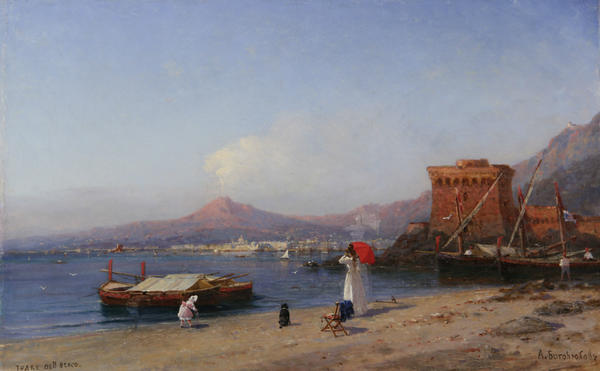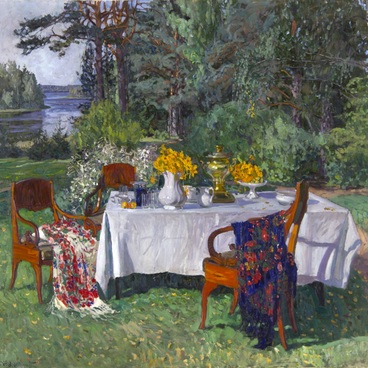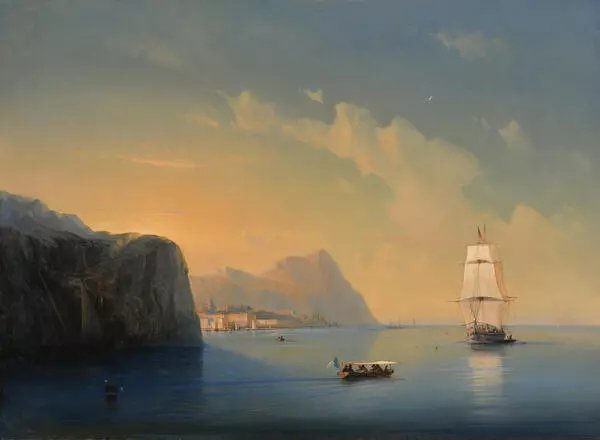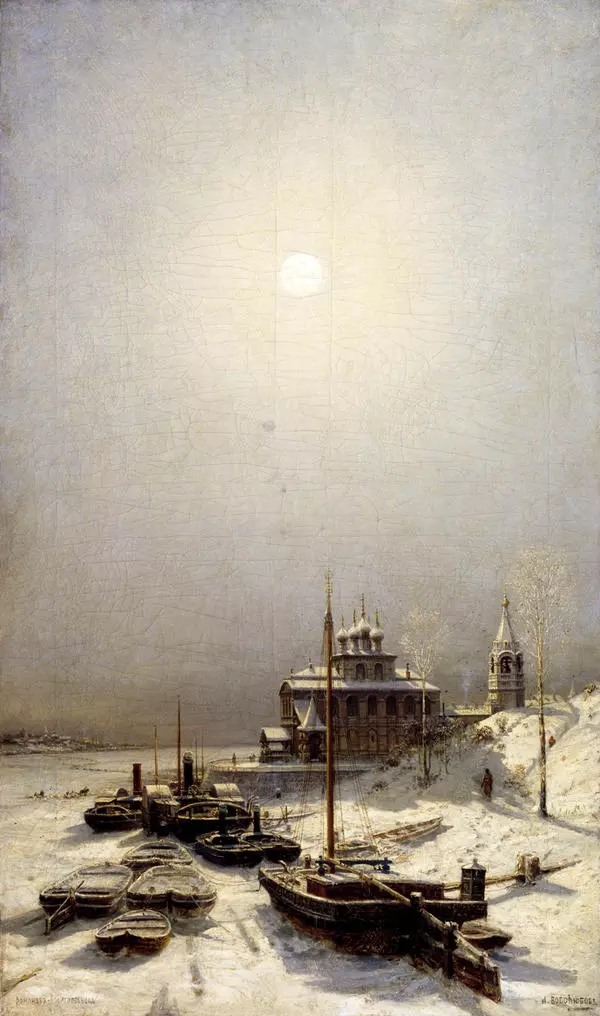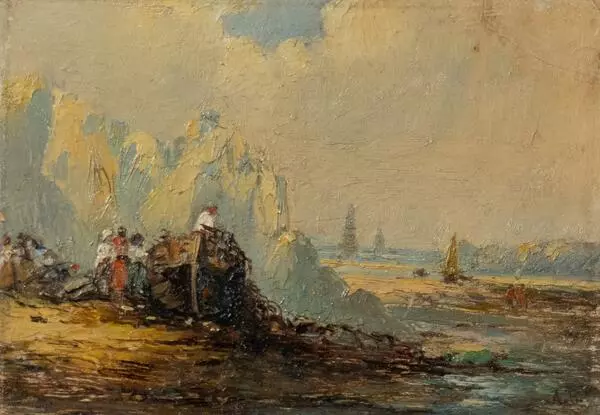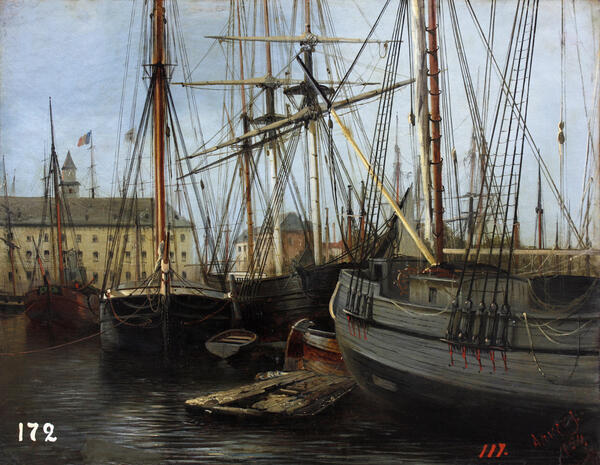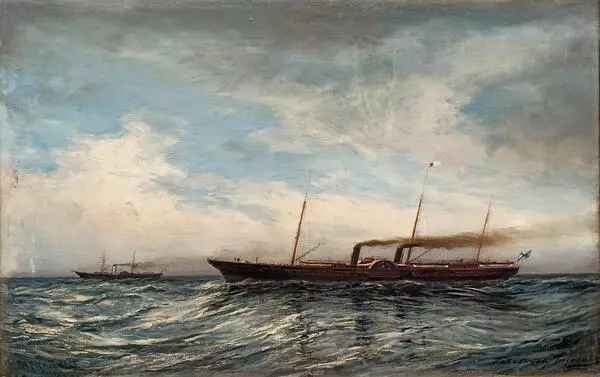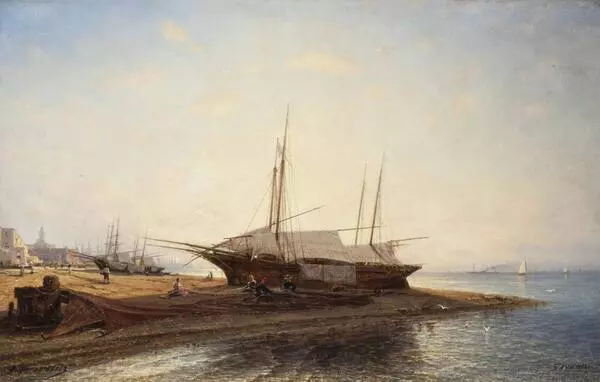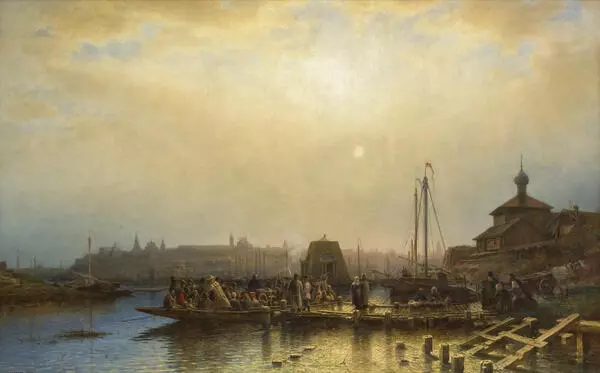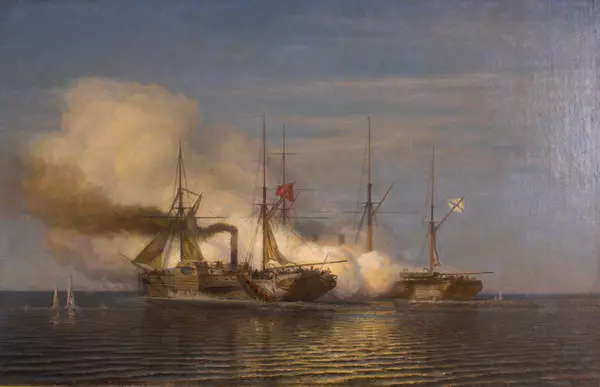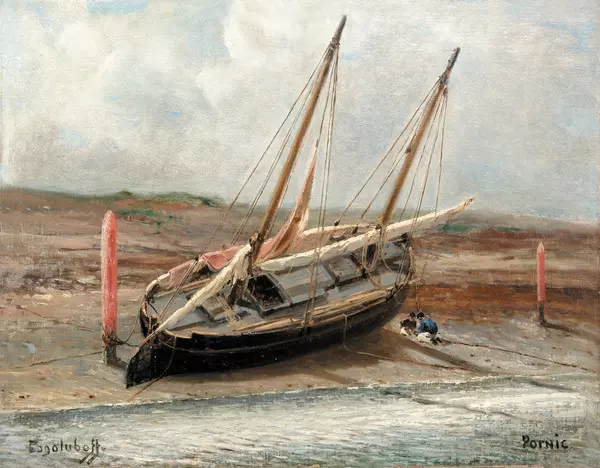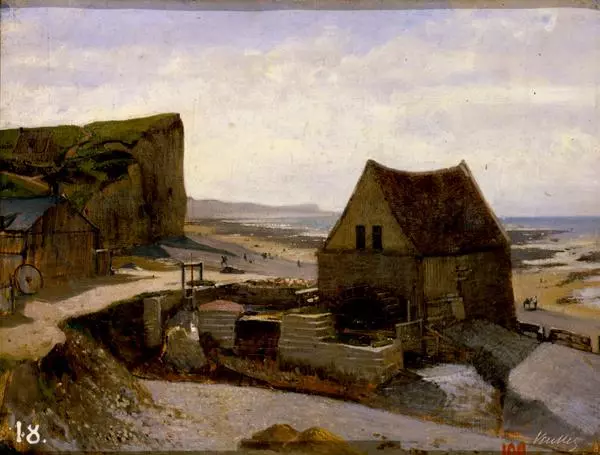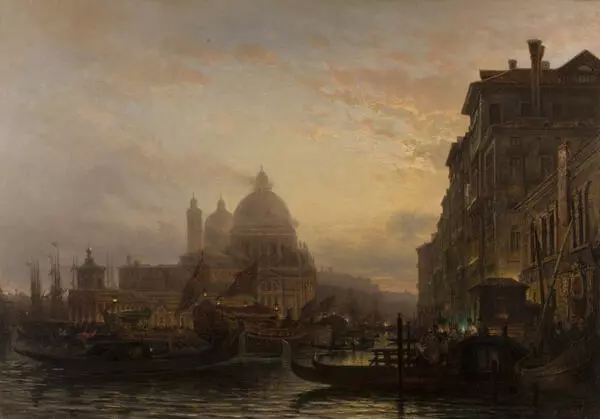Alexey Bogolyubov was a marine painter, master of the Russian battle seascape painting, a graduate of the naval school, and the grandson of philosopher and social critic Alexander Radishchev. He left military service and decided to become a non-degree student at the Imperial Academy of Arts to have the opportunity to do what he loved. His talent was highly appreciated by his contemporaries, and he became the artist of the Main Naval Headquarters, completing a unique series of paintings glorifying the bicentennial history of the Russian fleet. As an academic and professor of painting, Bogolyubov received public recognition for his outstanding artistic achievements.
Alexei Bogolyubov painted in oil and watercolor, worked in engraving, and tried his hand at porcelain painting. All his life he collected works of art. In the 1870s, he became the founder of the first public art museum in Saratov, where he donated his entire collection (about 1500 objects).
This fresh and lively landscape in the Vrubel collection was painted while traveling in Italy. The artist captured a magnificent view from Sorrento to Mount Vesuvius and the small town of Torre del Greco. The landscape is filled with moist sea air and dazzling sunlight. The atmosphere is enhanced by bright colorful accents of a blue cloak on a deck chair and a red umbrella.
During the Roman Empire, here, on the shores of the Gulf of Naples, were located the villas of the Roman patricians. In 79 AD, the eruption of Vesuvius destroyed the village. Subsequently, the village was restored, but suffered from the volcano two more times. In the Renaissance, representatives of the nobility and wealthy families of Italy began to build summer residences on this area. At the turn of the 19th -20th centuries, Torre del Greco became a famous summer resort. To this day, the town is very popular due to its picturesque nature, beautiful beaches, vineyards, restaurants, and proximity to the volcano Vesuvius.
Alexei Bogolyubov painted in oil and watercolor, worked in engraving, and tried his hand at porcelain painting. All his life he collected works of art. In the 1870s, he became the founder of the first public art museum in Saratov, where he donated his entire collection (about 1500 objects).
Since 1873, following the advice of doctors, the artist spent the winter months in France, and visited his motherland only in the summer. Many Russian artists in Paris received support from him. For almost a quarter century, he lived in Paris, but his creative and social life was still linked with Russia.
This fresh and lively landscape in the Vrubel collection was painted while traveling in Italy. The artist captured a magnificent view from Sorrento to Mount Vesuvius and the small town of Torre del Greco. The landscape is filled with moist sea air and dazzling sunlight. The atmosphere is enhanced by bright colorful accents of a blue cloak on a deck chair and a red umbrella.
During the Roman Empire, here, on the shores of the Gulf of Naples, were located the villas of the Roman patricians. In 79 AD, the eruption of Vesuvius destroyed the village. Subsequently, the village was restored, but suffered from the volcano two more times. In the Renaissance, representatives of the nobility and wealthy families of Italy began to build summer residences on this area. At the turn of the 19th -20th centuries, Torre del Greco became a famous summer resort. To this day, the town is very popular due to its picturesque nature, beautiful beaches, vineyards, restaurants, and proximity to the volcano Vesuvius.

